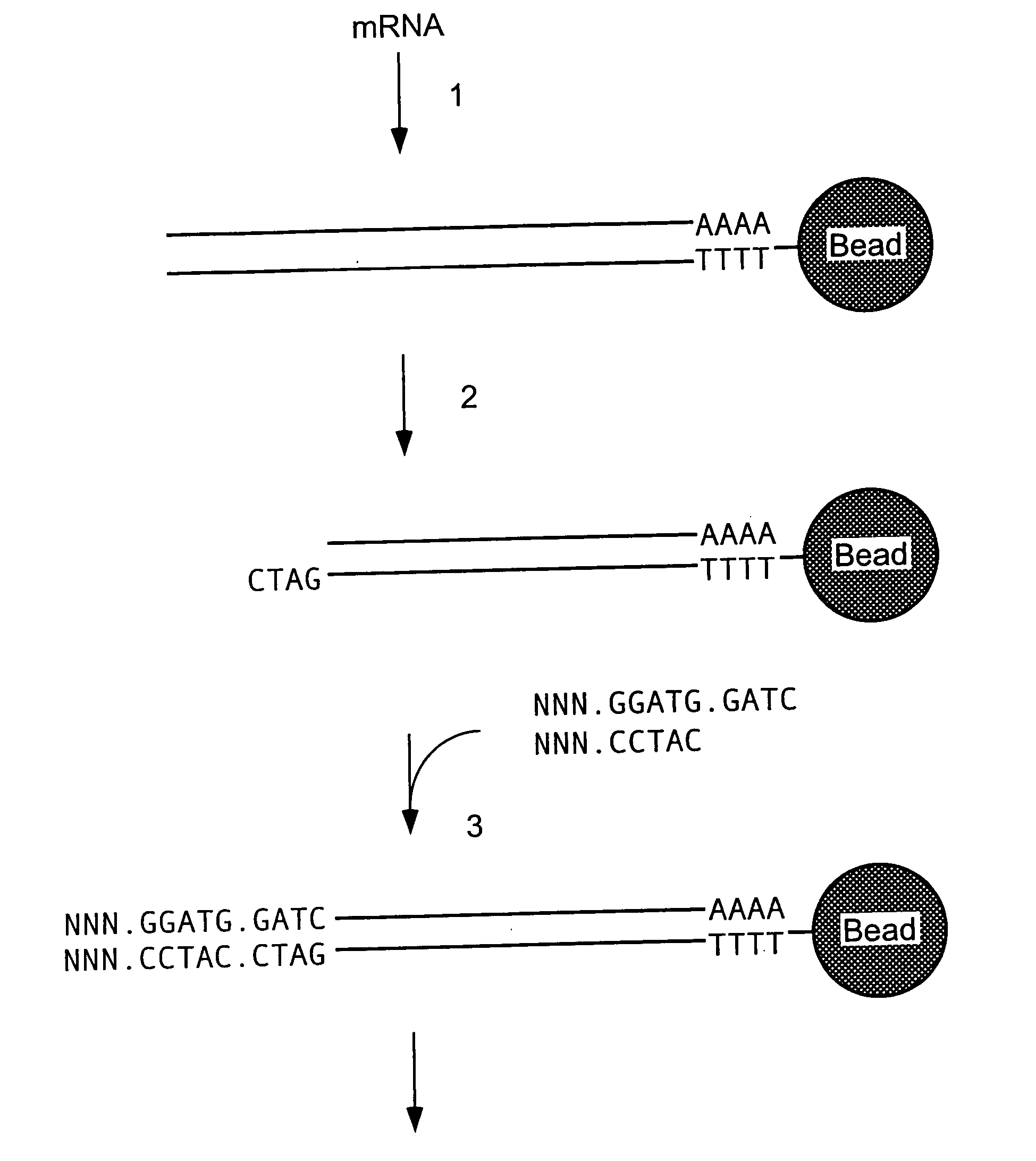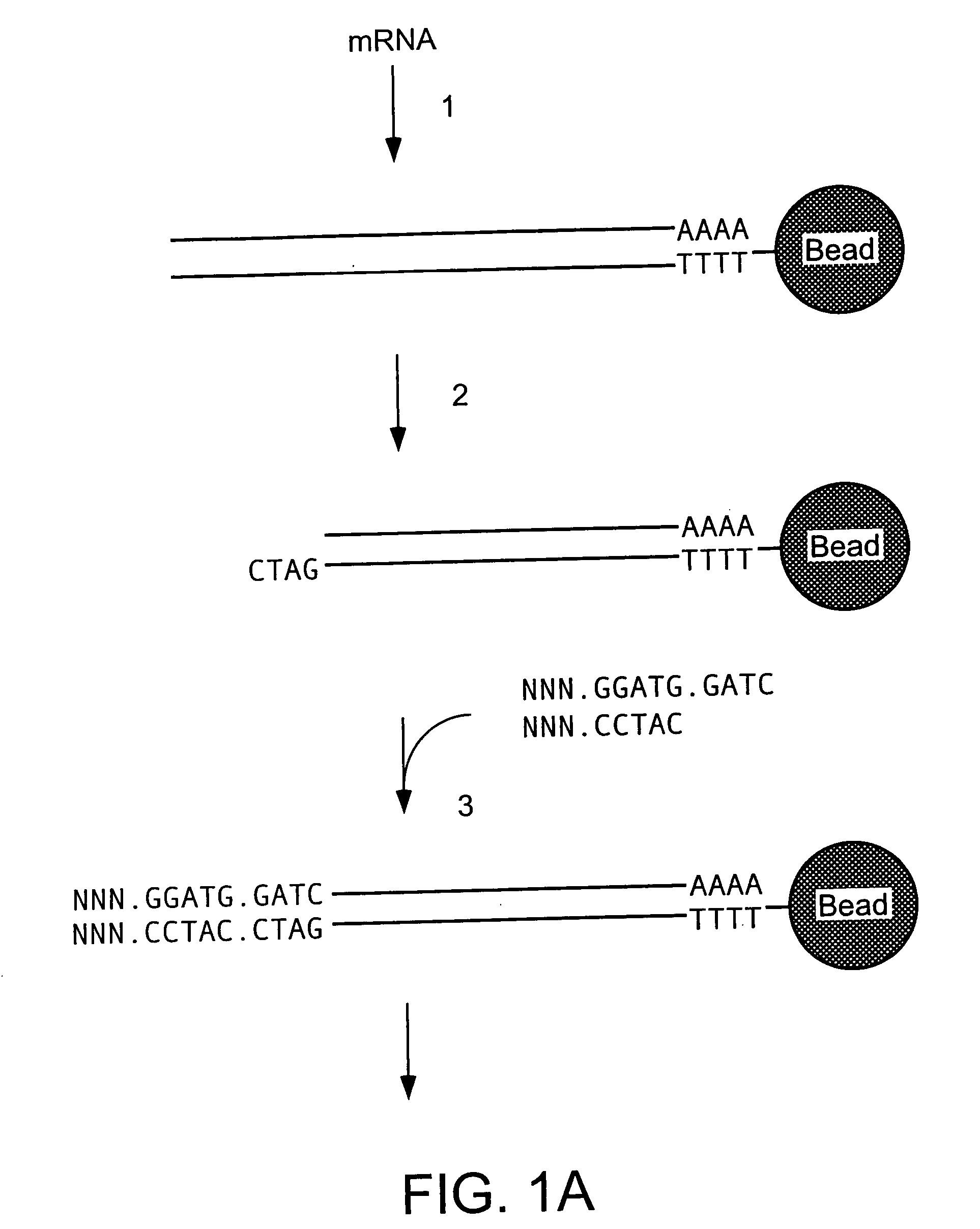Mass label linked hybridisation probes
a hybridisation probe and mass label technology, applied in the field of array of hybridisation probes, can solve the problems of difficult direct analysis or inability to recover the molecule being screened
- Summary
- Abstract
- Description
- Claims
- Application Information
AI Technical Summary
Benefits of technology
Problems solved by technology
Method used
Image
Examples
example 2
Synthesis of a Base, Mass-Labelled with an Aryl Ether
The following are protocols for the synthesis of a series of aryl ethers of thymidine nucleotides. The structures of these compounds are shown in FIGS. 24 and 25.
FT 9 (See FIG. 24)
A solution of 5′-O-(4,4′-dimethoxytrityl)-3′-succinoylthymidine (161 mg, 0.25 mmol) in dichloromethane (4 mL) was treated with N-methylmorpholine (27 μL, 0.25 mmol) and 2-chloro-4,6-dimethoxytriazine (44 mg, 0.25 mmol) and the whole was stirred for 1 h at room temperature. Then 4-phenoxyphenol (51 mg, 0.27 mmol) was added and stirring was continued for 5 days. The reaction mixture was diluted with dichloromethane and washed with an aqueous solution of citric acid (10% w / v) and twice with water. The organic phase was dried (Na2SO4) and the solvent was removed under reduced pressure. The residue was purified by flash chromatography using ethyl acetate / n-hexane (2:1) containing 1% of triethyl amine as eluate to give 86 mg (42% yield) of FT 9 as a col...
PUM
| Property | Measurement | Unit |
|---|---|---|
| Length | aaaaa | aaaaa |
| Mass | aaaaa | aaaaa |
Abstract
Description
Claims
Application Information
 Login to View More
Login to View More - R&D
- Intellectual Property
- Life Sciences
- Materials
- Tech Scout
- Unparalleled Data Quality
- Higher Quality Content
- 60% Fewer Hallucinations
Browse by: Latest US Patents, China's latest patents, Technical Efficacy Thesaurus, Application Domain, Technology Topic, Popular Technical Reports.
© 2025 PatSnap. All rights reserved.Legal|Privacy policy|Modern Slavery Act Transparency Statement|Sitemap|About US| Contact US: help@patsnap.com



